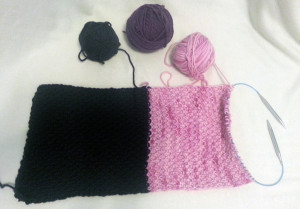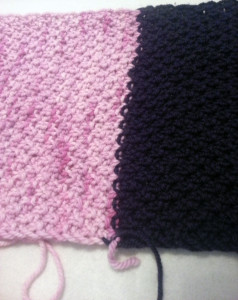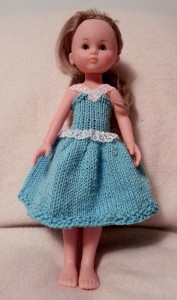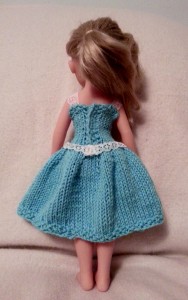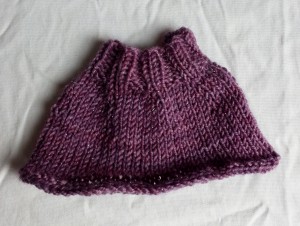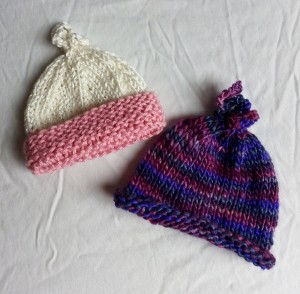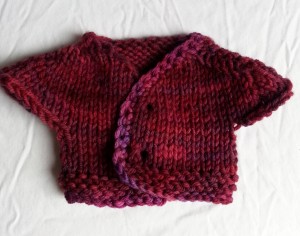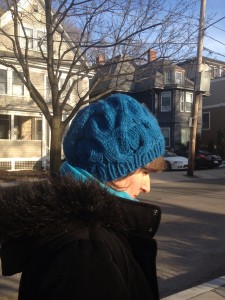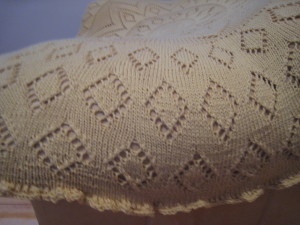 I have two children. When my first was a little girl, probably around age 1, I knit her a perfect golden blanket. The blanket came so easily, I don’t even know how it happened. I got the yarn in a good weight, it was superwash which fitted our sensibilities at the time, and the pattern, Elizabeth Zimmerman’s shawl, was the perfect match. My daughter still has the blanket and loves it: we spend many reading moments with it.
I have two children. When my first was a little girl, probably around age 1, I knit her a perfect golden blanket. The blanket came so easily, I don’t even know how it happened. I got the yarn in a good weight, it was superwash which fitted our sensibilities at the time, and the pattern, Elizabeth Zimmerman’s shawl, was the perfect match. My daughter still has the blanket and loves it: we spend many reading moments with it.
Step 1: start off
Fast forward 4 years later, I have a second child who is about the same age and I start feeling the pressure to make another perfect blanket. In retrospect, I should have gotten some of the same yarn in a different color and called it a day. But I didn’t. I decided that my kids were different enough that I had to make a completely different blanket, in a different yarn and with a different shape. Thus I started on another Zimmerman pattern: the square blanket knit from the center out.
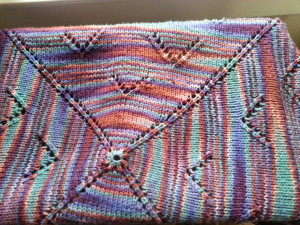 Things went wrong from the get go. I had purchased 3 skeins from Brooks Farm yarn at the NYS Sheep and Wool Festival in Rhinebeck and once I knit those up, I quickly realized that those skeins go very quickly in a square blanket. The last skein added at most 1″ to the whole project.
Things went wrong from the get go. I had purchased 3 skeins from Brooks Farm yarn at the NYS Sheep and Wool Festival in Rhinebeck and once I knit those up, I quickly realized that those skeins go very quickly in a square blanket. The last skein added at most 1″ to the whole project.
Step 2: get more yarn
In desperation, at the next NYS Speep and Wool festival I bought what I thought was the same yarn, but they didn’t have the same colors. Why didn’t I ask the lovely lady if I was buying the correct item is beyond me.
Once I started knitting, I realized that what I bought is much thicker (think bulky vs worsted or may even sport) than what I needed. In desperation, I emailed the farm. They confirmed based on my hastily taken pictures in a hotel, that I was in fact knitting with the wrong yarn. I upped the needle size between rows and the blanket grew, but over time, you could easily see that it just wasn’t correct.
This year, I made a second attempt to buy more yarn at the Sheep and Wool festival in Rhinebeck. I was determined to go back to Brooks Farm yarn and get the correct yarn.
Ha ha! The yarn has been discontinued. I almost cried right then and there and spent the rest of my sheep and wool darting form one booth to the next in a desperate search for something that will work. I came up with nothing.
Step 3: start anew
When I got home, I was determined to find yarn that was not only the same weight but also the same color – or at least matching one of the colors that was in the original blanket.
I ordered 5 skeins of Brown Sheep Nature Spun chunky wool which I had seen at Rhinebeck and was certain would match in thickness. $70. I sure wish that I had taken a picture of what I saw at Rhinebeck because once I started knitting it up, it became obvious that I yet again had the wrong yarn.
I admitted defeat. I was not going to find the same yarn and I wasn’t willing to pay Brooks Farm to match one of the colors in the few remaining undyed skeins they had (in retrospect, a money saving venture). Now, I had 5 skeins of a very dark purple yarn, which in itself was not enough to make a blanket for a child who is now almost 4. I was determined to finish this blanket, and make it the most beautiful thing I could knit. In desperation, I bought more yarn in pink and light purple – another $70. Note to the dear reader: I never buy yarn in this unabashed gorging. I make lots of lists and buy yarn to match a specific pattern.
So, I had a giant collection of very chunky yarn and I set off to work. I wanted to make a rectangular blanket from the center out, knit much like its square cousin. I even made a few swatches working out the technique. Things were looking up. I had a color scheme and a design. That was, until I took it off the needles after working 3 skeins into the whole thing. It bubbled in the center! Rip.
By now, I was feeling pretty manic. The good thing is that my kids are pretty oblivious to the hard line goals I set for myself and so while they noticed that I kept knitting and ripping out lots of different layouts they only said “Mom, why are you ripping that out again?” but not “My blanket is too small. Why haven’t you made me a new one?”
At this point, I had to find a pattern, so I went to Ravely. I found a double seed stitch blanket design that I really liked. The only problem is that I don’t have the needles to knit such long rows, plus, since I didn’t have equal numbers of skeins in each of the 3 colors, it would be quite a challenge to figure out how to make different colored rows look elegant. I had to make it work in squares, so I could knit it a little at time, but, since I don’t like to cut yarn, I had to make it work in such a way that I could knit 1 square and then knit another square adjacent to it from the same skein.
I swatched for about a week to figure out the size of the square I could knit that would take up exactly 1/2 a skein and then, I started. It looks beautiful. I’ve made two squares and I will write up the pattern and you will see how I have figured out a way to knit the squares without cutting yarn and binding off at the end of each square. Here is the dark purple and the pink together and you can see the ball of the light purple that I will also use alternating.
While I will be making a rectangular blanket, you could use this technique to make square blankets or even odd shapes.
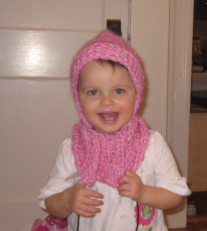
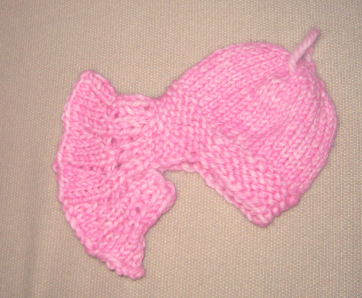
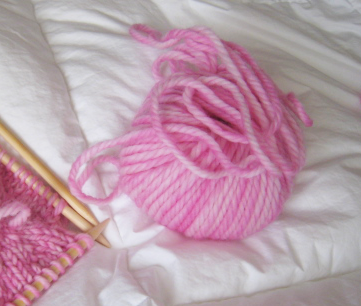
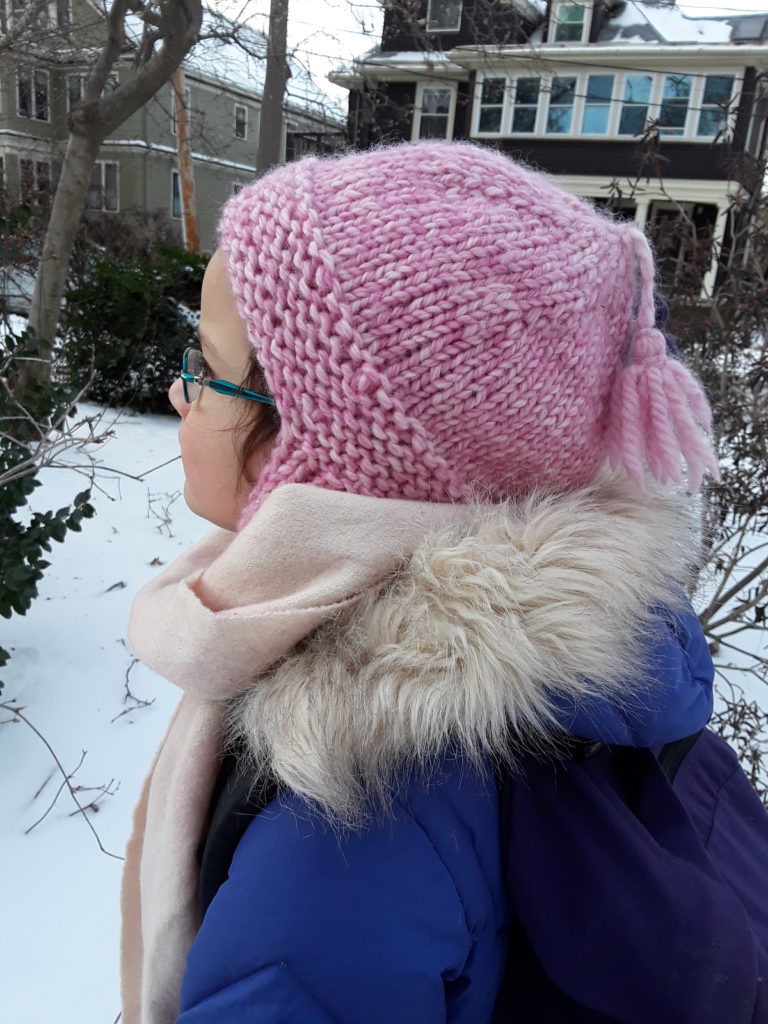
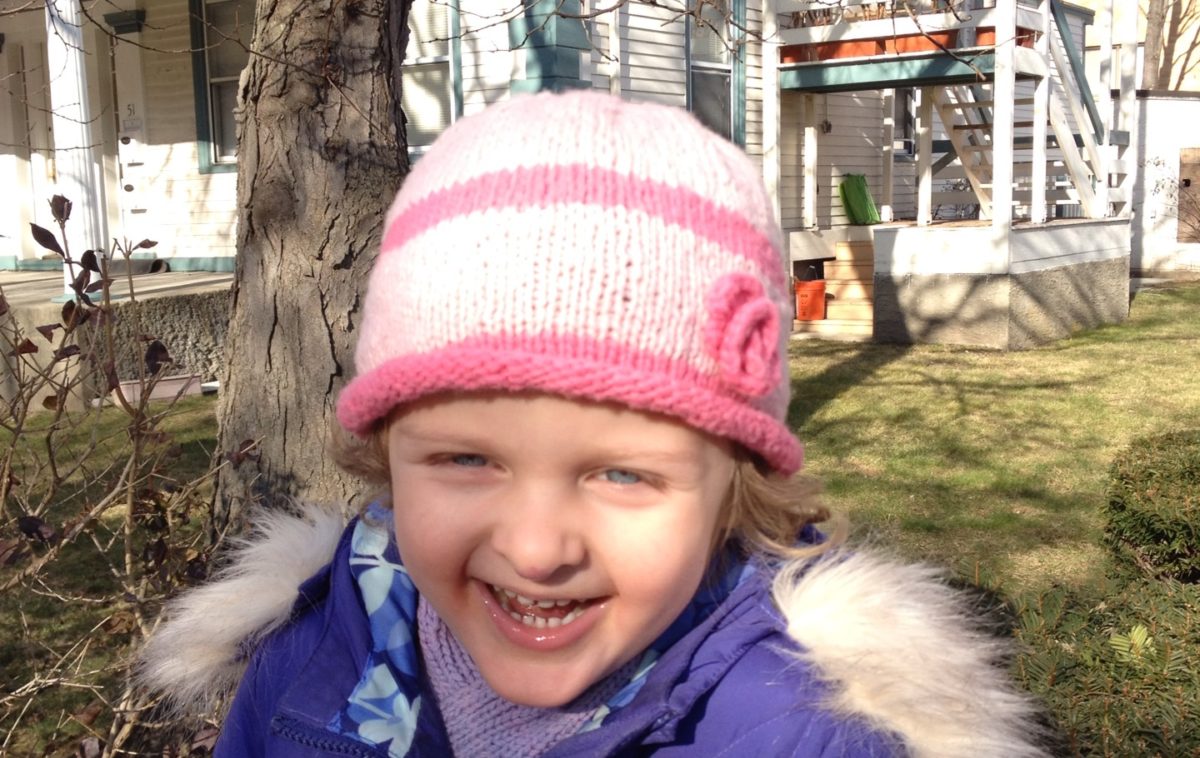

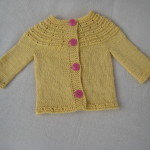
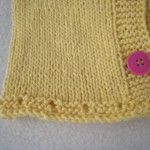
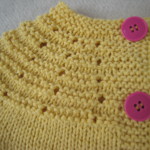
 I have two children. When my first was a little girl, probably around age 1, I knit her a perfect golden blanket. The blanket came so easily, I don’t even know how it happened. I got the yarn in a good weight, it was superwash which fitted our sensibilities at the time, and the pattern, Elizabeth Zimmerman’s shawl, was the perfect match. My daughter still has the blanket and loves it: we spend many reading moments with it.
I have two children. When my first was a little girl, probably around age 1, I knit her a perfect golden blanket. The blanket came so easily, I don’t even know how it happened. I got the yarn in a good weight, it was superwash which fitted our sensibilities at the time, and the pattern, Elizabeth Zimmerman’s shawl, was the perfect match. My daughter still has the blanket and loves it: we spend many reading moments with it. Things went wrong from the get go. I had purchased 3 skeins from Brooks Farm yarn at the NYS Sheep and Wool Festival in Rhinebeck and once I knit those up, I quickly realized that those skeins go very quickly in a square blanket. The last skein added at most 1″ to the whole project.
Things went wrong from the get go. I had purchased 3 skeins from Brooks Farm yarn at the NYS Sheep and Wool Festival in Rhinebeck and once I knit those up, I quickly realized that those skeins go very quickly in a square blanket. The last skein added at most 1″ to the whole project.